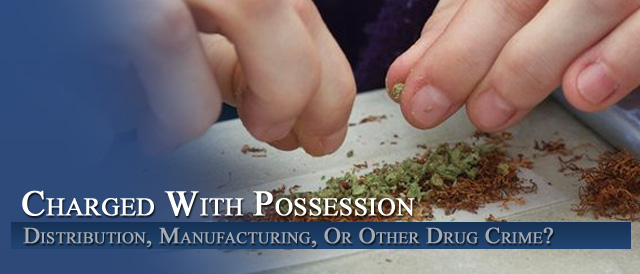




Understanding the Forms of Methamphetamine and The Federal Sentencing Guidelines
Physical Form and Effects
Methamphetamine is a synthetic controlled substance. Usually, it is “a white, odorless, bitter-tasting crystalline powder” that is primarily consumed by inhaling (“snorting” a powdered form through the nose), “smoking” (burning or heating a crystallized form and then inhaling the fumes), or injecting a liquefied form.
Methamphetamine is known by a plethora of nicknames including, inter alia, meth, crank, speed, chicken feed, crystal, go-fast, shabu, glass, ice, strawberry quick, and methlies quick.
Additionally, it is available with a prescription.
Methamphetamine is “a highly addictive stimulant that affects the central nervous system.” It affects the central nervous system by stimulating the brain to release the neurotransmitter “dopamine” and then it prevents the “reuptake” of the excessive dopamine, which, generally speaking, results in a long-lasting high (a sense of euphoria).
Along with a host of short and long-term adverse mental and physical health effects, repeated use of methamphetamine “causes long-term damage to dopaminergic and serotonergic fiber pathways” in the brain. “In other words, methamphetamine deforms and kills brain cells.”
Chemical Forms
There are three primary chemical forms of methamphetamine:
(A) d-methamphetamine hydrochloride (dextro-methamphetamine hydrochloride);
(B) l-methamphetamine hydrochloride (levo-methamphetamine hydrochloride), and
(C) dl-methamphetamine hydrochloride, which is a racemic mixture of the two aforementioned types of methamphetamine.
The method of production usually drives the chemical nature of the methamphetamine. Manufacturing methamphetamine through the use of phenyl-2-propanone (P-2-P) produces dl-methamphetamine. The conversion of ephedrine or pseudoephedrine through the Birch-Bekenzer Reduction method of production (the “Nazi” method of production) or the Red Phosphorous method of production (the “heat-reduction” method) produces d-methamphetamine.
And l-methamphetamine can be made through the conversion of Vick’s Inhalers®. Though there are three primary chemical forms of methamphetamine hydrochloride, the current “user’s choice” is d-methamphetamine hydrochloride, which produces a greater physiological effect upon the user.
Methamphetamine And the Federal Sentencing Guidelines
“Methamphetamine” is a term that is used generically in complaints, indictments, informations, literature, and at trial. Indeed, in order to prove guilt at trial, the government need only prove the involvement of methamphetamine — the government does not have to prove what type of methamphetamine was involved.
Under the Guidelines, however, the distinct differences between specific “types” of methamphetamine are very important and can have a dramatic impact on the base offense level and the eventual sentence imposed. The Guidelines consider three types of methamphetamine: Ice, which is “a mixture or substance containing d-methamphetamine hydrochloride of at least 80 percent purity[]”; actual methamphetamine, which “refer[s] to the weight of the controlled substance itself, contained in the mixture or substance[]”; and methamphetamine, which refers to a usable or marketable mixture or substance containing methamphetamine.
Accordingly, if evidence of the type of methamphetamine is not presented and proven at trial or if the defendant does not make a stipulation regarding the “guideline type” of methamphetamine during the plea process, the generic use of the word “methamphetamine” or the generic use of the terms Ice, actual methamphetamine (meth-actual), or a mixture of methamphetamine (meth-mixture) will leave open the question of what “type” of methamphetamine was involved in the offense.
The government bears the burden of production and the burden of proving, by a preponderance of evidence, the quantity and type of methamphetamine that was involved. It is not enough that the government simply assert that the methamphetamine is “Ice” or “meth-actual”; indeed, “[t]here must be proof, not a play on words, to justify the added deprivation of liberty that follows the scoring of the drug as … [Ice or meth-actual].”
The government can, however, “meet its burden by presenting either chemical analysis, expert testimony, or circumstantial evidence that the . . . [specific type of methamphetamine] was the subject of the crime.” However, the government attorney’s unsworn assertions “do not provide a sufficiently reliable basis for a defendant’s sentence.” Correspondingly, “[b]ald conclusory statements do not acquire the patina of reliability by mere inclusion in the PSR.” “As with all fact-intensive sentencing issues, if the defendant makes a timely objection to the drug quantity [or drug type] determination in the … [presentence report], ‘if the … court chooses to make a finding with respect to the disputed facts, it must do so on the basis of evidence, and not the presentence report.'”
In fact, if a presentence report (PSR) includes conclusory statements that the Guidelines or facts do not support, a sentencing court may not simply adopt the unsupported conclusory statements.
The government certainly has the aforementioned burdens of production and proof. However, it will probably not be enough for the defendant to simply object to the information within the PSR, particularly when a defendant disputes the quantity or type of methamphetamine or is charged with possession with intent to distribute a controlled substance and tries to reduce the quantity of the controlled substances based on personal usage. It will be important to put forth an argument with factual, legal, or scientific support.
Additionally, if the defendant fails to appropriately object to information regarding the type or quantity of methamphetamine stated in the PSR before sentence is imposed, the defendant will be limited to “plain error” review on appeal. Moreover, the “[f]ailure to object to a fact in … [the PSR], or failure to object at the [sentencing] hearing, acts as an admission of fact[]” and the defendant may be found to have waived that issue. In the end “‘nebulous eyeballing’ is [to be] avoided, [and] ‘factual determinations under the Guidelines need not emulate the precision of Newtonian physics.'”
Ratios Between Types
It is clear that the Guidelines distinguish between types of methamphetamine, but what does that mean at sentencing?
If the methamphetamine is determined to be Ice, the entire weight of the methamphetamine and remaining substances are included in the calculation of the offense level and then punished at a rate of 10-1 in relation to a simple usable mixture or substance containing methamphetamine.
If the methamphetamine is determined to be actual methamphetamine, only the weight of the actual methamphetamine within the usable mixture or substance is included in the calculation of the offense level, and it also is punished at a rate of 10-1 in relation to a simple usable mixture or substance containing methamphetamine.
If the methamphetamine is treated simply as a usable mixture or substance containing methamphetamine, the entire weight of the usable substance is included in the calculation of the offense level.38 Importantly, “[i]n the case of a mixture or substance containing … methamphetamine, use the offense level determined by the entire weight of the [usable] mixture or substance, or the offense level determined by the weight of the … methamphetamine (actual), whichever is greater.”
The Drug Equivalency Tables, which are used when multiple controlled substances are present in a case and “convert” the various types of controlled substances in such a case into a “marijuana-equivalent” for sentencing purposes, highlight the significant differences in the punishment for the three guidelines types of methamphetamine.
Other Articles of Interest:
- Colorado Law: Basic Information about Drug Crime Cases
- The Calculation of Drug Weight For Sentencing Purposes in Colorado and In Federal Drug Crime Cases
- Methamphetamine II: A Closer Look At An Epidemic
- 2013 Colorado Law Redesigns Sentencing For Colorado Drug Crimes – Senate Bill 250
- Colorado Drug Crimes Sentencing Issues












